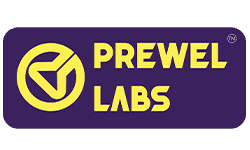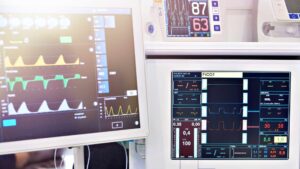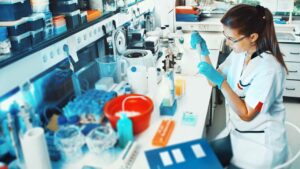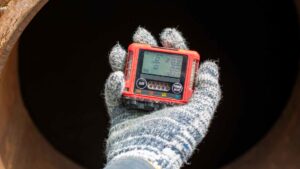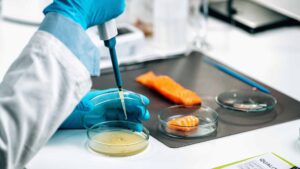Medical Device Testing FAQs
What are medical device regulatory submissions?
Medical device regulatory submissions involve the preparation and submission of documentation to regulatory authorities, such as the FDA, for approval to market or sell a medical device. Our medical device testing services support manufacturers in generating the necessary data and reports required for these submissions.
What is Medical device reporting FDA?
Medical device reporting to the FDA is a regulatory requirement where manufacturers, importers, and device user facilities must submit reports on adverse events, product malfunctions, and other safety-related issues. Our medical device testing services assist in gathering relevant data for accurate and timely reporting to the FDA.
What are medical device electrical safety standards?
Medical device electrical safety standards, such as IEC 60601 series, define requirements for the safety and performance of electrical medical equipment. Our testing services include electrical safety testing to verify compliance with these standards, ensuring the safety of medical devices.
What are new medical device regulations?
New medical device regulations refer to updated or revised standards imposed by regulatory authorities. Our medical device testing services ensure that devices comply with the latest regulations, addressing changes in safety, efficacy, and quality standards to facilitate regulatory approvals.
What are the types of medical device testing?
Medical device testing includes various types such as biocompatibility testing, sterility testing, usability testing, electrical safety testing, performance testing, and reliability testing. Our comprehensive testing services cover these categories to ensure that devices meet regulatory requirements and industry standards.
Which are the top FDA regulations for medical devices?
Key FDA regulations for medical devices include 21 CFR Part 820 (Quality System Regulation), 21 CFR Part 803 (Medical Device Reporting), and 21 CFR Part 806 (Corrections and Removals). Our medical device testing services are designed to support compliance with these regulations and others.
What are the medical device testing requirements?
Medical device testing requirements encompass a range of criteria, including biocompatibility, electrical safety, performance, and reliability testing. Our services address these requirements by conducting comprehensive testing to ensure that devices meet the necessary standards for safety and efficacy.
What are the medical device testing standards?
Medical device testing standards include ISO standards such as ISO 10993 for biocompatibility, ISO 14971 for risk management, and IEC 60601 for electrical safety. Our testing services adhere to these standards, providing manufacturers with a reliable assessment of their devices against internationally recognized benchmarks.
Which medical device testing certifications are mandatory?
Mandatory medical device testing certifications vary depending on the device type and intended use. Common certifications include CE marking for the European market and FDA approval for the U.S. market. Our testing services assist in generating the data required for these certifications.
What are the ISO regulations for medical devices?
ISO regulations for medical devices include standards like ISO 13485 for quality management systems, ISO 14971 for risk management, and ISO 10993 for biocompatibility. Our medical device testing services align with these ISO regulations to ensure compliance and facilitate regulatory submissions.
What are the risks of not properly testing medical devices?
Not properly testing medical devices can pose significant risks to patient safety and health. It may lead to device malfunctions, incorrect diagnoses, treatment errors, and even life-threatening situations. Additionally, inadequate testing can result in regulatory non-compliance, damage to brand reputation, and legal liabilities for manufacturers.
What are the regulatory requirements for medical device testing?
Regulatory requirements for medical device testing vary depending on the jurisdiction, but they generally involve adherence to standards set by regulatory bodies such as the FDA (Food and Drug Administration) in the United States or the European Medicines Agency (EMA) in the European Union. These requirements typically encompass rigorous testing protocols, documentation of testing processes, validation of efficacy and safety, and compliance with quality management systems like ISO 13485.
What are the latest trends in medical device testing?
Some of the latest trends in medical device testing include the adoption of advanced technologies such as artificial intelligence (AI), machine learning, and virtual simulations for predictive modeling and analysis. There is also a growing emphasis on human factors testing to ensure usability and patient-centric design. Additionally, the integration of real-world evidence and continuous monitoring through connected devices is becoming increasingly important in assessing long-term device performance and safety.
What are the essential documents needed for medical device testing?
Essential documents for medical device testing typically include a comprehensive test plan outlining testing objectives, methodologies, acceptance criteria, and timelines. Other necessary documents may include device specifications, risk management plans, validation protocols, testing reports, and regulatory submissions such as 510(k) premarket notifications or CE Mark applications.
What are some common challenges faced in medical device testing?
Common challenges in medical device testing include navigating complex regulatory requirements, ensuring test validity and reproducibility, managing resource constraints, addressing interoperability issues, and staying abreast of evolving technological advancements and industry standards. Additionally, variability in patient populations, clinical settings, and environmental conditions can present challenges in accurately assessing device performance and safety across diverse contexts.
